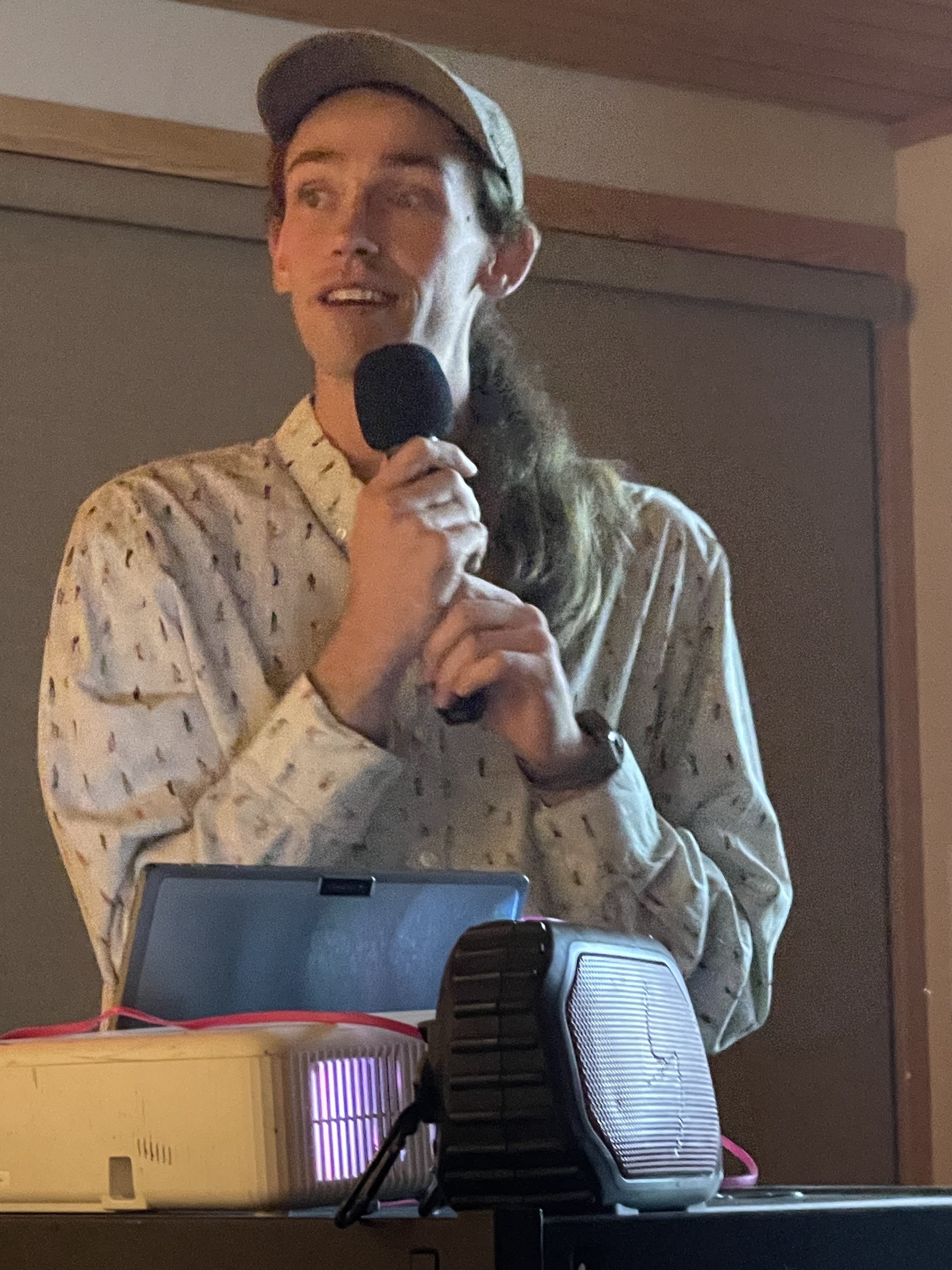

MIDDLETOWN— The Middletown Area Town Hall (MATH) meeting for October was held Thursday October 10 at 7 pm at the Middletown Library public meeting room where attendees heard about wildfire evacuation and preparedness and information on the Strong Towns movement nonprofit’s goals.
John Speka presented on the Lake Area Planning Council’s (APC) Wildfire Evacuation and Preparedness Plan. The plan is to “help agency officials coordinate evacuation efforts, standardize protocols for wildfires, (and) inform community members of practices and procedures…for future emergencies”. Speka is engaged in public outreach efforts for the project partners who are the County Office of Emergency Services (OES), the Fire Protections Districts and Lake County Transit Authority. The effort is funded by CalTrans. They have reviewed existing plans and policies, collected relevant data, launched public surveys and are conducting live workshops next week on October 23 in Clearlake and October 24 in Lakeport.
Speka would like the community to take the survey and “…become involved in the community engagement workshops”. There will be a second set of workshops once a draft plan is developed.
MATH president Monica Rosenthal pointed out that there is a virtual Local Area Plan Advisory Committee (LAPAC) meeting scheduled for Wednesday at 3 to 4:30pm. More information can be found at https://lakecounty2050.org
Danny Wind presented information on the Strong Towns movement. Wind stated that the non-profit “…advocates for a model of development that allows our cities, towns, and neighborhoods to become financially strong and resilient. We believe that in order to thrive, our communities must stop valuing efficiency and start valuing resilience. We promote incremental development, local decision making, and financial solvency.”
Wind pointed to Strong Towns materials that consider pedestrian traffic to be an “indicator species” in small town development. Lots of pedestrian traffic indicates a vibrant local economy as pedestrians are more likely to visit multiple businesses that are closely located. Pedestrians build the local retail tax-base and build a stronger sense of community through chance encounters and a greater likelihood of unplanned retail patronage. “If you, at midday, or at most times of day, are seeing more cars in your downtown than people, that’s kind of a canary in the coal mine that that your community isn’t doing so well,” Wind said.
Pedestrians and fast-moving vehicles are in natural opposition. Dense or fast-moving traffic are disincentives for crossing the street for opportunistic shopping. To build the local economy and promote pedestrian safety, Wind said their analysis has shown that there are affordable strategies to discourage speeding.
Wind showed a video that stated, “Wide-lane roads are the result of forgiving design. And while this practice saves lives on the highways, it causes speeding in neighborhood streets. Because when we pull fixed objects like buildings, curves, and bike lanes farther away from the sides of a lane, people feel more comfortable driving at faster speeds.” His presentation cited an example where “$100 of paint” made a difference in slowing speeders down from 40 mph to 25 mph by creating “optical narrowing”. Painting parallel parking spots and bike lanes can optically narrow roads and reinforce reduced speed areas. Painting mid-block crosswalks can improve foot traffic, Wind stated. Getting people out of their cars and on the sidewalks creates sustainable growth, economic vitality and a stronger sense of community, he said.




